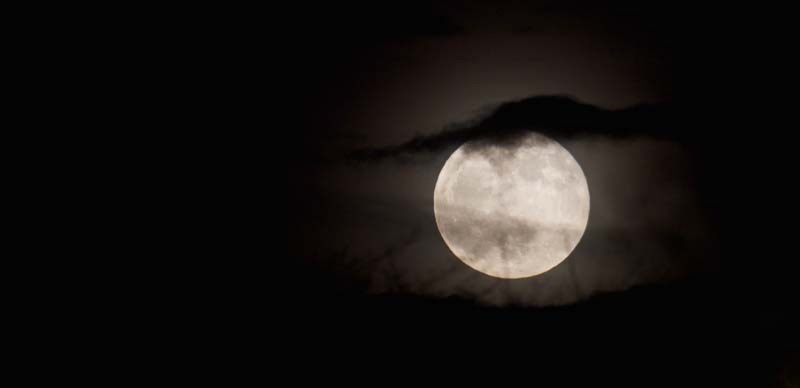City residents might spot some shooting stars tonight as an annual meteor shower returns to Earth – that is, if Mother Nature co-operates.
The annual Geminid meteor shower will reach its peak on Dec. 13 and 14, reports local astronomer Murray Paulson, with up to 120 fireballs expected to streak across the sky each hour. "There may even be more."
But cloudy weather plus a blinding bright moon mean that it'll be pretty tough to see any of the shower from around St. Albert, says Bruce McCurdy, volunteer astronomer at the Edmonton Telus World of Science. "The chance of anyone seeing anything is pretty remote."
The Geminids are an annual meteor shower that appears to originate from the constellation Gemini, says Paulson, sending streaks of light across the night sky for several days each year.
Those streaks are bits of sand and rock hitting the Earth's atmosphere at about 36 kilometres per second (about 129,600 km/h), McCurdy says, and incinerating from friction. "They're going at a pretty good clip."
The sand and rock is part of a wide debris trail left behind by the asteroid 3200 Phaethon, he continues, which researchers suspect may be an extinct comet. "It's kind of funky compared to other asteroids," he notes, as its orbit takes it closer to the sun than any other named space-rock. It's also been seen spewing out debris as it moves like a comet. While the roughly five-kilometre-wide rock does cross the Earth's orbital plane, there's no risk of a collision.
Since the debris trail is always in the same place, Paulson says the meteor shower always takes place at around the same time on Earth – Dec. 13. The trail is huge relative to the Earth, so there's little chance of us running out of Geminids anytime soon.
You'll need to find a patch of clear sky to see the Geminids, Paulson says, as well as some shade to block out the moonlight. "The meteors will be coming out of the east," he notes, specifically from the direction of Jupiter, which will be the brightest star in that part of the sky this week. You won't need binoculars, but if you have them, you might be able to see a ghostly ribbon behind the meteors that is their ionized trail.
If you miss the Geminids, Paulson says you can always catch the Quadrantids meteor shower on Jan. 3, which is almost as good.
Solstice time
Or you can wait until next weekend and catch the longest night of the year.
The winter solstice will occur this Dec. 21 at about 10:11 a.m. in St. Albert, Paulson says. The solstice is the point at which the sun's track is at its lowest point in the sky, which makes for the longest night of the year.
Due to the tilt of the Earth's axis, McCurdy says, the sun takes a slightly different path through the sky each day. The solstice is the point at which the northern hemisphere is most tilted away from the sun, giving it the shortest amount of time visible over the horizon.
The nights will get gradually longer as we approach the 21st and shorter thereafter, Paulson says. You won't notice the difference unless you've got a really good watch, he notes, but you can track it by marking the height of a shadow at noon every day. The shadow will grow longer as we approach the solstice and shorter thereafter.
St. Albert will get just seven hours, 27 minutes and 38 seconds of daylight on the 21st, reports timeanddate.com, but will get a full four seconds more the next day as it passes the solstice.
Paulson suggests using the long night to take a look at Jupiter; it's near its closest point to Earth right now, meaning that you can actually see four of its orbiting moons with a pair of binoculars. "You get to see a dance every night."




